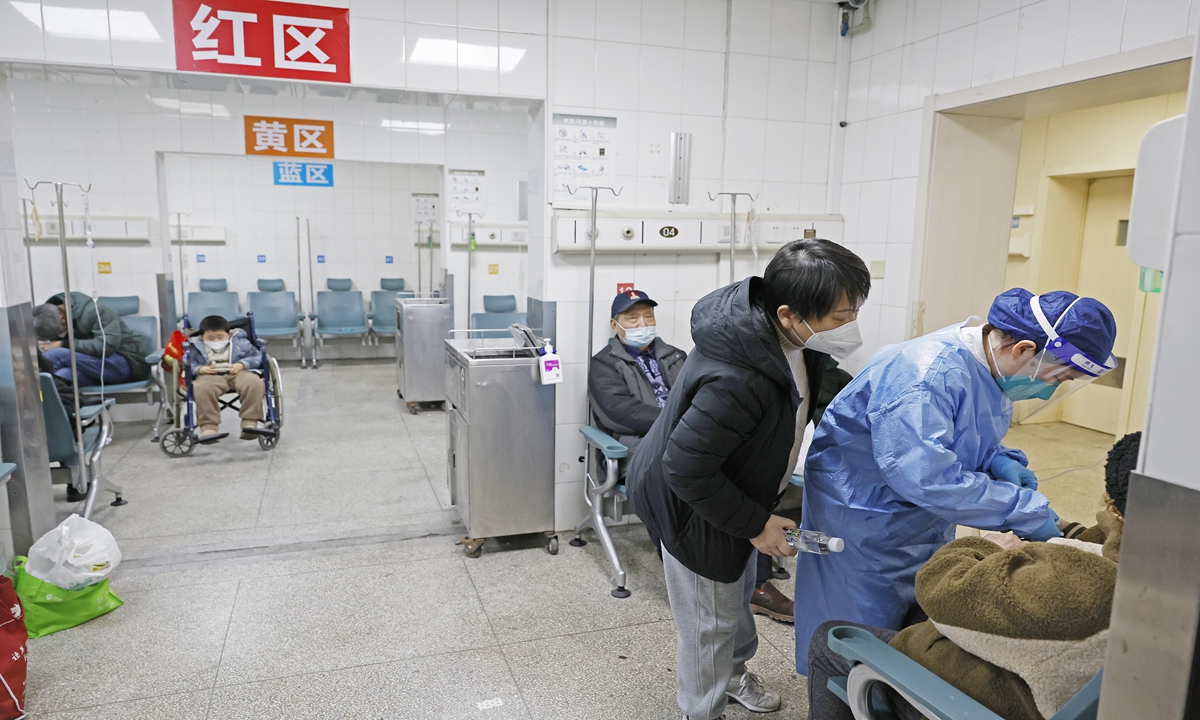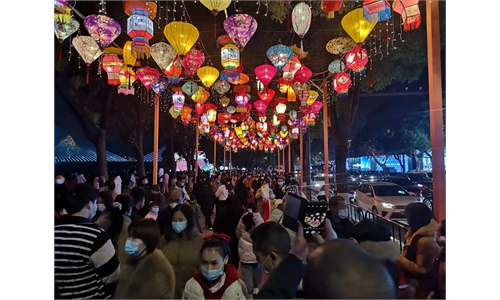
A medical worker pulls out a needle for a patient at the infusion room of the emergency department of Tongji Hospital in Shanghai at the Chinese New Year's Eve on January 21, 2023. Photo: IC
Two hours. The entire time of my visit to the emergency room (ER) during the Spring Festival cost, much shorter than I expected.
I rushed to ER on January 22, the first day of the Chinese New Year holidays. I had endured three days of chest tightness and shortness of breath, probably caused by Omicron infecting me in late December.
The hospital I reported to, about 10-minute ride from my home in Shanghai's Pudong New Area, is a top-level general public hospital with a national well-known neurology department. Its ER reportedly received up to 1,300 patients one day alone in December, when peak COVID-19 infections hit the city. I could imagine how the doctors and nurses toiled busily beneath the bright lights in wards or operating rooms.
This was the first Spring Festival after China announced its optimized COVID-19 response. Considering the just-past wave of infections, the intensive celebrations and parties during the festival, and the limited number of medical personnel on duty, I had thought the hospital would have been crowded with patients. The peak has passed.
Within minutes, I registered, talked to the ER doctor, completed an electrocardiogram and had my blood drawn. One and a half hours later, I went to see the doctor again with the results of my blood test. The whole process went so smoothly that it only took two hours.
The test results proved I was fine. The ER experience was more like a short trip, which gave me a window into a setting which is more commonly linked with pain and agony.
As I walked around the ER waiting for my blood results I saw makeshift beds were placed in the hall and corridors. A 50-something woman was sitting beside a bed and peeling an apple for what looked like her sick husband. A few steps away, a young man pulled down the curtain temporarily hanging around, preparing to changing diaper for an elderly man lying in bed.
The nurse station was surrounded by makeshift beds too. Someone was asking the nurse for hot water. Behind him three women, seemingly relatives of the patients, chatted in low voices. They talked about their relatives' illnesses, while wishing each other a Happy Chinese New Year.
The smell of disinfectant still filled the air. For the patients it was probably not a happy festival. I thought this special time could be made more bearable accompanied by their loved ones.
I encountered similar scene at the same hospital two years ago, when I visited ER for a possible postoperative issue. I also saw makeshift beds at the hall and corridors, as there are always crowded patients at a major public hospital.
Chinese public hospitals usually won't turn down patients even when wards are full. When a few Western media turn the cameras on the makeshift beds on corridors, and even the pale faces on the beds, to vilify China's medical treatment environment, Chinese hospitals are trying their best not to give up on every patient.
The outside world is curious whether China's medical system could hand the country's COVID policy adjustment, especially in Shanghai, a 24-million metropolis that underwent months of citywide lockdown in early 2022.
Perhaps the medical system in Shanghai is not 100-percent perfect. But when I felt unwell and visited the ER, the fast and smooth process of seeing a doctor and receiving treatment left me feeling reassured. I told myself that Shanghai and other cities in China will become better in the coming years.




